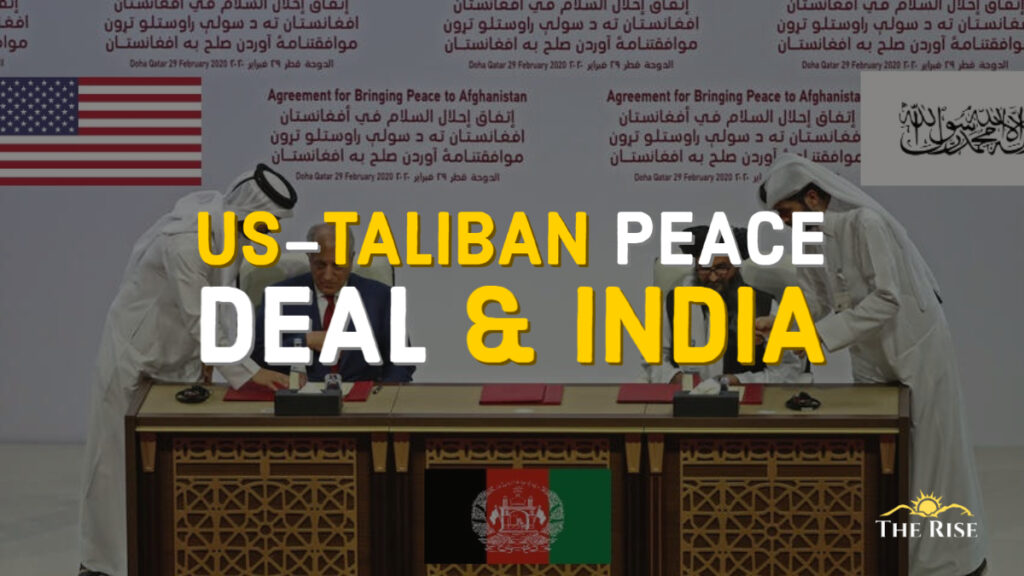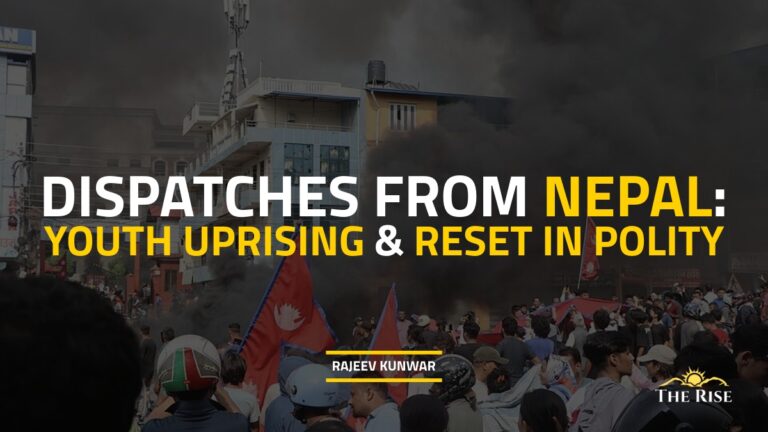Our TRIP intern Pintu Kumar Mahla analyzed the recent decision of the USA to withdraw its troops from Afghanistan, and its implications on India. This article is an outcome of the internship on studying the implications of US troop withdrawal from Afghanistan.
On 29 February 2020, the United States signed a landmark accord with the Taliban. As per the accord, “the U.S. troops are expected to withdraw from Afghanistan by the end of 2021” (Chaudhuri and Shende). The successful implementation of this accord would position Taliban as a major player in Kabul politics. Consequently, New Delhi’s continued presence in Kabul will have several impacts on India’s interests.
One of the major concerns for India is the fact that the withdrawal of US troops might allow anti-India terror outfits to establish safe haven in Afghanistan. Though the joint declaration between the United States and the Afghan government includes “guarantees to prevent the use of Afghan soil by any international terrorist groups or individuals against the security of the United States and its allies” (Chaudhuri and Shende), there is quite a lot of suspicion as to how these promises will be carried out. The suspicions stem from the involvement of Pakistan’s Inter-Services Intelligence (ISI) in the Kabul politics and its historical bitterness with India.
In fact, the Haqqani group, a trained and armed faction of the Taliban has taken responsibility for the 2008 attack on the Indian embassy in Kabul. And, it was reported that ISI had helped the Haqqani group in carrying out this attack.
Since the US announced a deal with the Taliban on February 29, there has been a spurt in violence in Afghanistan with resurgence of the Haqqani network and relocation of terror camps of both LeT and Jaish-e-Mohammed from Pakistan. In March 2020, An attack was carried out on a Gurdwara in Kabul. And, Islamic State Khorasan (IS-K) has taken responsibility for this attack. It was believed that one of the IS-K operatives who attacked the gurdwara was from the state of Kerala in India. Consequently, these are proven examples of the real terrorism threats to India’s presence in Kabul.
The withdrawal agreement has turned a new page into the Afghanistan Saga. And, the world sees India, a credible actor, as a part of the stabilization of the situation in Afghanistan.
Another impact India may have to deal with is the increasing footprints of Pakistan’s ISI in Kabul. “They are our powerful watchmen” is how the Taliban summarized its relationship with the ISI (Chaudhuri and Shende).
To fully comprehend the problem, it is pertinent to understand the historical angle. And history tells us that the Taliban’s aim has been to re-establish its medieval style of rule and its severe interpretation of Sharia law. To accomplish this, its first goal was to force NATO and other international forces out of Afghanistan; or if it could not force them out, to wait them out. And the Taliban possesses a very different view of time than the Western need for instant gratification. While Westerners look at their watches, they view the calendar and exhibit great strategic patience. They recognize the fragility of the government of Afghanistan without NATO forces. At the same time, it seeks continually to undermine the Kabul government. The weaker, more ineffective, and more corrupt the government looks, the better the alternatives offered by the insurgents appear to the population. (Riley)
In addition, India has a great concern over the increasing political instability in Kabul. The power-sharing agreement signed between Afghan President Ashraf Ghani and former chief executive Abdullah Abdullah, on May 17, 2020, cannot be taken at face value (Chaudhuri and Shende). This agreement could even become a threat to political stability in Afghanistan.
The ‘insurgency narrative’ by which the International Security Assistance Force (ISAF) made sense of the situation in Afghanistan was associated closely with six key interleaved ‘strategies’ in Helmand: (i) to support and strengthen the Government of the Islamic Republic of Afghanistan (GIRoA) and state apparatus (notably the police) and to promote good governance; (ii) to neutralize the Taliban and al-Qaeda remnants; (iii) to provide security for the civilian population; (iv) to rebuild Afghanistan and its infrastructure; (v) to disrupt the narcotics (specifically opium) industry; and (vi) to win the hearts and minds of the people (Brown). India needs to entail its strategic path and not depend on the Afghan’s way of reconciliation, which entails the huge risk of competitive politics.
To conclude, the continual engagement in Kabul can not simply be inspired by a humanitarian window. Efforts to check the spread of radical Islam and the drug problem in Afghanistan needs to go hand in hand. And, it can be done only by providing security, governance, education and development.
The withdrawal agreement has turned a new page into the Afghanistan Saga. And, the world sees India, a credible actor, as a part of the stabilization of the situation in Afghanistan.
References
- Chaudhuri, Rudra and Shreyas Shende. “Dealing With the Taliban: India’s Strategy in Afghanistan After U.S. Withdrawal”. Carnegie India, 2020.
- Riley, Jonathon. “Afghanistan and Pakistan: One British Commander’s View”. FPRI, 2019.
- Brown, D. Andrew. “Making sense of the war in Afghanistan”. Elsevier, 2018, pp. 43-56












Pingback: Taliban at the Door of Kabul as US forces leave Bagram - TheRise.co.in
Pingback: Afghanistan: A new opportunity for Quad - TheRise.co.in
Pingback: United States, NATO, and the Taliban: Analysis of Politics - TheRise.co.in